Iran’s journey to develop uranium enrichment technology spans several decades, evolving from imported designs to increasingly sophisticated indigenous models. This progression from the early P-1 centrifuges to advanced IR-6 machines represents a technological evolution that has significant implications for both energy production and international security concerns 12.
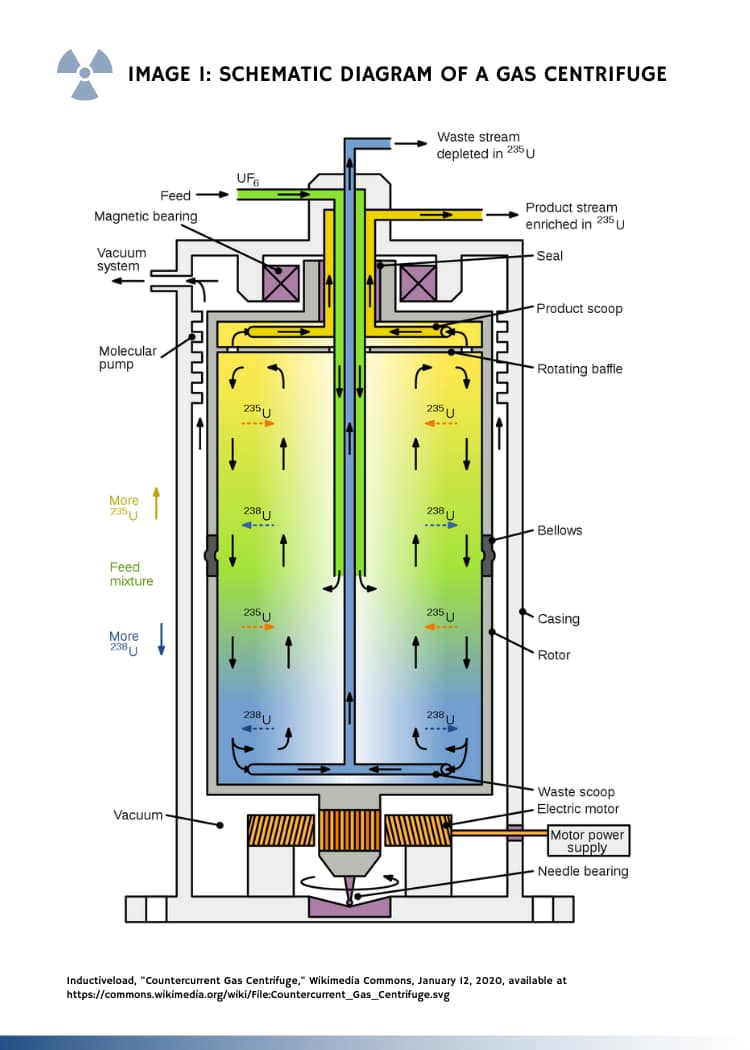
Schematic diagram illustrating the internal components and operational principles of a gas centrifuge for uranium isotope separation.
The Origins: Pakistan’s P-1 Design and A.Q. Khan
Iran’s centrifuge program began in the late 1980s when the notorious proliferation network led by Pakistani metallurgist A.Q. Khan provided Iran with centrifuge designs and components 34. This marked the beginning of Iran’s uranium enrichment capabilities, which would evolve significantly over the following decades 15.
The P-1 centrifuge, based on a design stolen by Khan from the European Urenco consortium in the 1970s, became the foundation of Iran’s early enrichment program 67. These first-generation machines used aluminum rotors with maraging steel bellows, representing relatively basic technology compared to later designs 38.
Through the Khan network, Iran received drawings and components for approximately 500 P-1 centrifuges in the mid-1990s 34. These machines had a relatively low enrichment capacity of around 2 separative work units (SWU) per year per centrifuge, limiting their efficiency for uranium enrichment 98.
The P-1 centrifuge operated at lower speeds due to limitations of its aluminum rotors, which couldn’t withstand the extreme forces generated at higher rotational velocities 310. Despite these limitations, these machines formed the backbone of Iran’s early enrichment efforts at facilities like Natanz 111.
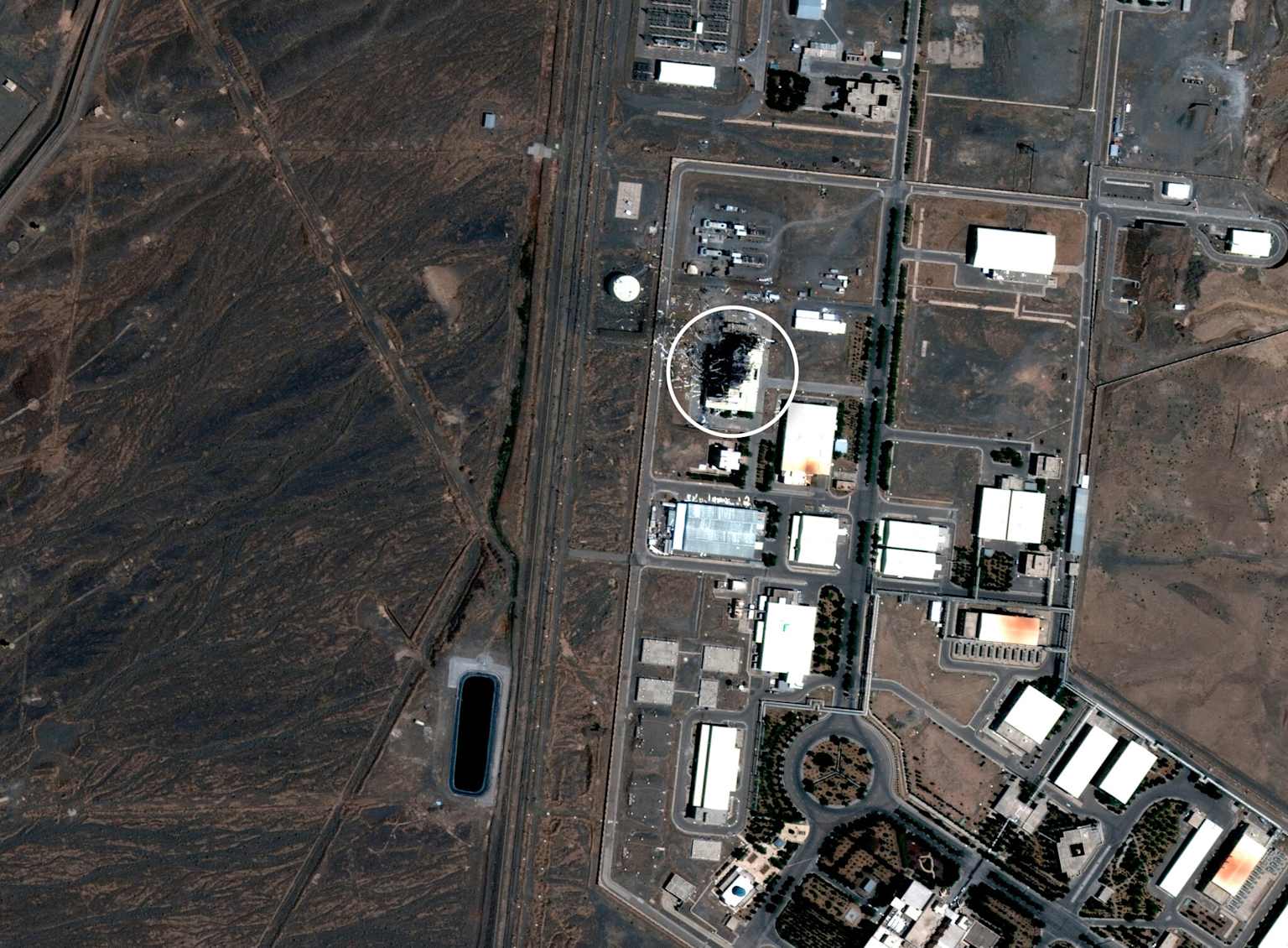
Satellite view of the Natanz nuclear facility in Iran, showing a damaged or under-construction area highlighted in white.
Moving Forward: The P-2 and Its Modifications
By the mid-1990s, the Khan network also provided Iran with designs for the more advanced P-2 centrifuge 41. The P-2 represented a significant improvement over the P-1, with an enrichment capacity approximately 2.5 times greater than its predecessor 912.
Unlike the P-1, the P-2 utilized maraging steel rotors, which could spin at higher speeds and thus separate uranium isotopes more efficiently 39. The P-2 had a capacity of about five SWU annually, compared to the P-1’s two SWU, making it significantly more productive 98.
However, Iranian engineers faced challenges in reproducing the P-2 design, particularly in manufacturing the bellows, which required highly specialized materials and precision engineering 913. These technical obstacles led Iran to modify the original design to suit their manufacturing capabilities 912.
The modified P-2 design developed by Iran was approximately half the length of the original Pakistani P-2 and eliminated the bellows entirely 914. Iranian experts compensated for these modifications by using carbon fiber for the rotor, which could spin faster than maraging steel, thus maintaining separation efficiency despite the altered design 912.
The Indigenous Turn: Development of the IR Series
Iran’s shift from foreign-acquired designs to indigenous development began with the IR-1 centrifuge, which was essentially Iran’s version of the P-1 1112. The name “IR” stands for “Iranian,” signifying the country’s move toward developing its own enrichment technology 1516.
The IR-1 became the workhorse of Iran’s enrichment program, with thousands installed at facilities in Natanz and Fordow 1117. These machines, while relatively inefficient, formed the foundation of Iran’s uranium enrichment capabilities and demonstrated the country’s commitment to developing nuclear technology 118.
By 2025, Iran had evolved its centrifuge designs through several generations, from the basic IR-1 to the advanced IR-6 and beyond 1916. Each new generation incorporated technological improvements that increased enrichment capacity and efficiency 1520.
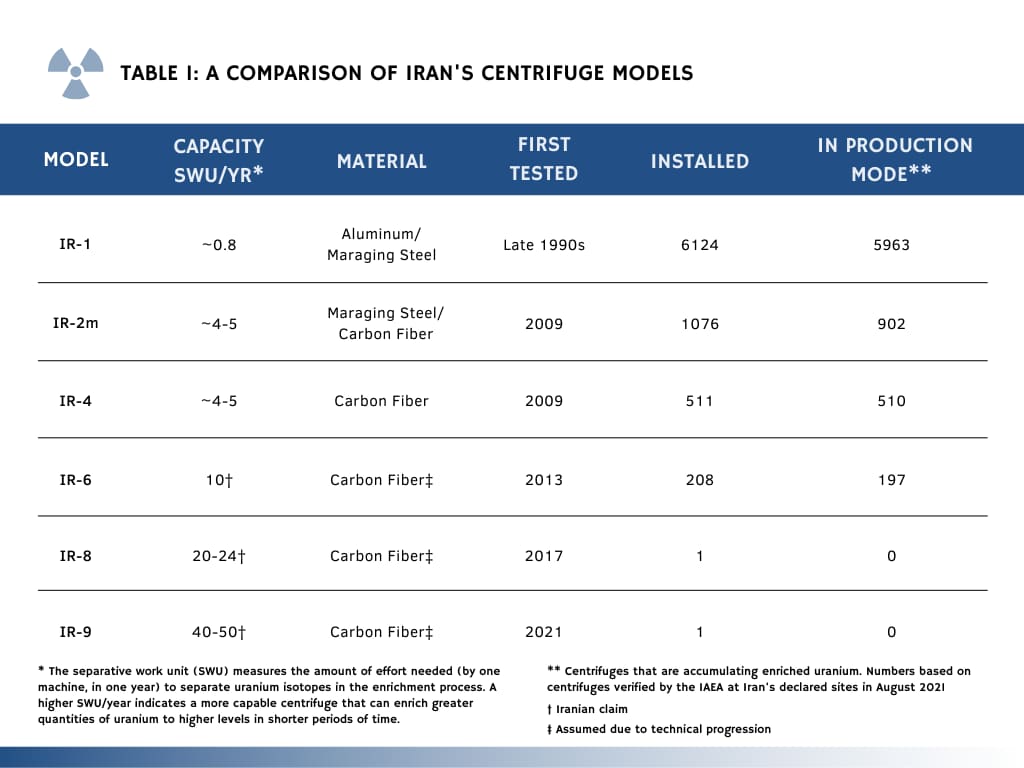
Table comparing Iran’s centrifuge models, detailing their capacity, materials, first test dates, and deployment numbers.
The IR-1: Iran’s First Mass-Produced Centrifuge
The IR-1 centrifuge is Iran’s version of the Pakistani P-1 design, using aluminum rotors with maraging steel bellows 118. With a separation performance of about 0.8 SWU per year in cascade configuration, these machines required large numbers to produce significant amounts of enriched uranium 1219.
The IR-1 stands about 210 cm tall, including casing and mounting base, with a rotor assembly approximately 180 cm long 128. The rotors are 10.5 cm in diameter and 40 cm in length, with a casing width of 20 cm, making them relatively compact but less efficient than later models 1220.
Iran began testing the IR-1 in the late 1990s, with cascade testing beginning in 2006 at the Pilot Fuel Enrichment Plant (PFEP) at Natanz 1217. By November 2007, Iran was operating 18 cascades of IR-1 centrifuges at the Fuel Enrichment Plant (FEP) 121.
Despite their limitations, IR-1 centrifuges formed the bulk of Iran’s enrichment capacity for many years, with over 15,000 installed at Natanz and 2,710 at Fordow as of the mid-2010s 1121. These machines continue to operate today, though they are gradually being supplemented or replaced by more advanced models 1918.
Second Generation: The IR-2m and IR-4
Iran’s second-generation centrifuges, the IR-2m and IR-4, were derived from the P-2 design and represented significant advances over the IR-1 1115. These machines incorporated carbon fiber components, which allowed for higher operational speeds and greater enrichment efficiency 1214.
The IR-2m uses two carbon fiber rotors connected by a maraging steel bellow, while the IR-4 uses a carbon fiber bellow instead 1214. Both centrifuges have a rotor diameter of 17 cm, significantly wider than the IR-1, with an estimated rotor length of about 60 cm 1220.
The total machine height of the IR-2m is estimated to be between 155-162 cm, while the IR-4 stands between 164-175 cm 1220. Both have casings with a width of 25 cm, and their separation capacity is approximately four to five times greater than the IR-1 1215.
Testing of these advanced centrifuges began in 2009, with single machine testing followed by small cascade testing 1216. By 2013, Iran had installed a full 164-machine cascade of IR-2m centrifuges at the PFEP and had begun installing these machines at the FEP 1217.
Under the 2015 Joint Comprehensive Plan of Action (JCPOA), Iran was limited in its use of advanced centrifuges 2122. However, following the U.S. withdrawal from the agreement in 2018, Iran resumed and expanded its deployment of IR-2m and IR-4 machines for uranium enrichment 1523.
The IR-6: Iran’s Third-Generation Centrifuge
The IR-6 centrifuge, first produced in 2009 and publicly unveiled in April 2010, represents Iran’s third-generation centrifuge technology 1224. This advanced model stands approximately 160-168 cm tall with a casing width of 30 cm, making it wider than previous generations 1220.
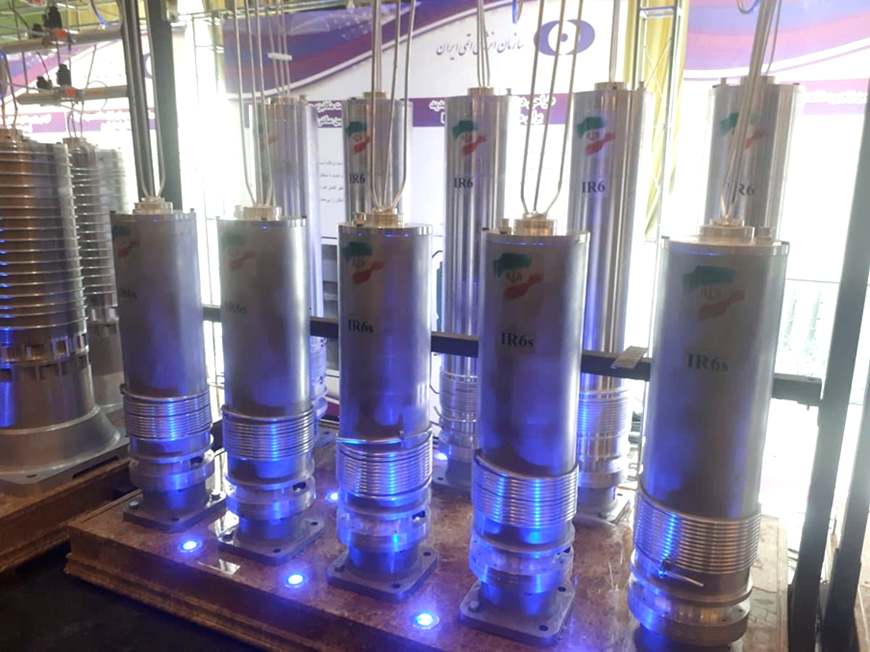
Iranian IR-6 and IR6s centrifuges showcased on a display platform.
Iran claims the IR-6 has a separation capacity of 10 SWU per year, roughly double that of the IR-2m and IR-4, and more than ten times that of the IR-1 1224. This significant increase in efficiency means fewer centrifuges are needed to produce the same amount of enriched uranium 1219.
The IR-6 likely employs dual rotors connected by a bellow, with both components made from carbon fiber for increased strength and performance 1213. There is also a smaller, single-rotor variant called the IR-6s, which has been less widely deployed 1225.
Iran began testing single IR-6 machines with uranium hexafluoride gas in 2013, gradually expanding to small cascade testing 1224. By 2020, Iran was testing the IR-6 in larger cascades of over 100 machines, demonstrating increasing confidence in this design 1220.
In 2021, Iran began using cascades of IR-6 centrifuges to produce uranium enriched up to 60% U-235 at the Pilot Fuel Enrichment Plant, and also began installing IR-6 machines at Fordow 1221. This deployment marked a significant escalation in Iran’s enrichment capabilities 1918.
Iran’s Nuclear Facilities: Natanz and Fordow
Iran operates two primary uranium enrichment facilities: the Natanz complex and the Fordow Fuel Enrichment Plant 1718. These heavily secured sites house Iran’s centrifuge cascades and are central to the country’s nuclear program 126.
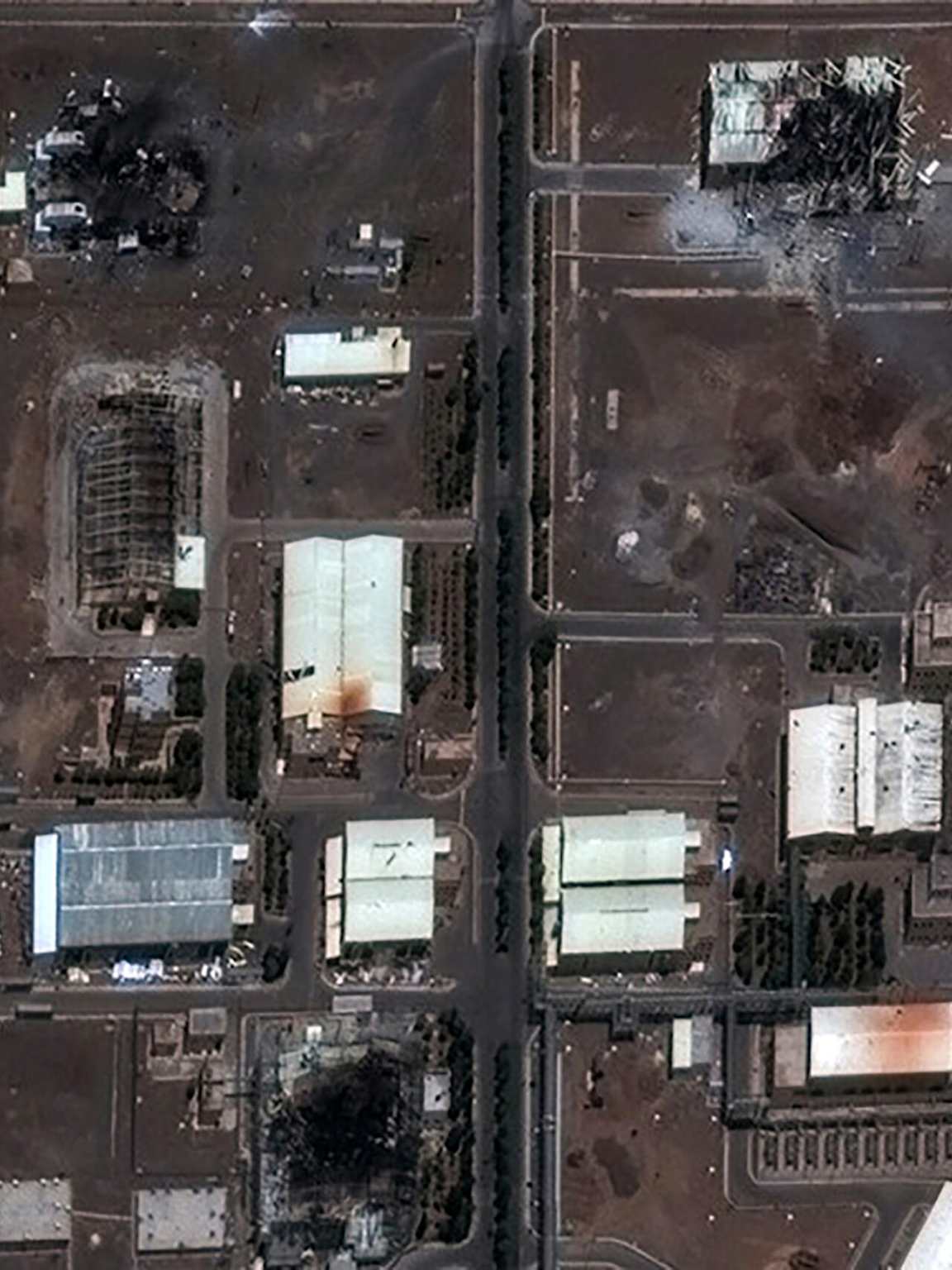
Satellite view of the Natanz nuclear facility in Iran, displaying extensive damage to multiple structures.
The Natanz facility, located in central Iran, includes both the underground Fuel Enrichment Plant (FEP) and the above-ground Pilot Fuel Enrichment Plant (PFEP) 1726. The FEP is designed to house over 50,000 centrifuges, while the PFEP is used for research and development of advanced centrifuge models 117.
Natanz’s underground enrichment halls are protected by approximately 40 meters of earth, reinforced steel, and concrete, making them resistant to potential aerial attacks 2726. Despite this protection, the facility has reportedly been targeted by sabotage operations that damaged centrifuges and related infrastructure 2827.

Aerial view of Iran’s Fordow uranium enrichment plant showing underground facility and key structures near Qom.
The Fordow Fuel Enrichment Plant, revealed publicly in 2009, is buried deep inside a mountain near the city of Qom 118. This facility is divided into two enrichment halls, designed to hold approximately 3,000 centrifuges, and is considered highly resistant to military strikes due to its mountain protection 1718.
Under the 2015 JCPOA, Iran was prohibited from enriching uranium at Fordow, but following the U.S. withdrawal from the agreement, Iran resumed enrichment activities there in 2018 2118. As of 2025, Fordow houses cascades of both IR-1 and the more advanced IR-6 centrifuges 1829.
Technical Challenges and Material Constraints
Iran’s centrifuge development has faced significant technical challenges, particularly related to specialized materials 133. Maraging steel and high-strength aluminum, essential for certain centrifuge components, have been difficult to obtain due to international sanctions and export controls 135.
For advanced centrifuges, carbon fiber is a critical material that allows rotors to spin at higher speeds 1312. While Iran has claimed to have domestic carbon fiber production capability, it has continued to seek high-grade carbon fiber and related production equipment from abroad 121.
Manufacturing precision components like bellows presents another significant challenge 912. The bellows, which connect rotor sections and allow flexibility when spinning at high speeds, require sophisticated metallurgical techniques and precision engineering 109.
Operating centrifuge cascades requires specialized electronic systems, including frequency converters and control systems 1228. These components have also been targets of international sanctions and reported cyberattacks, most famously the Stuxnet attack in 2010 that targeted control systems at Natanz 1230.
Despite these challenges, Iran has demonstrated increasing self-sufficiency in centrifuge production 113. The country has established facilities for manufacturing centrifuge components and continues to improve its indigenous capabilities 3113.
International Monitoring and Constraints
Iran’s centrifuge program has been subject to international monitoring and constraints, particularly through agreements like the 2015 Joint Comprehensive Plan of Action (JCPOA) 2123. Under this agreement, Iran was limited to using only the IR-1 centrifuge for uranium enrichment and faced restrictions on research and development of advanced models 2122.
The International Atomic Energy Agency (IAEA) has played a crucial role in monitoring Iran’s centrifuge activities 128. Through regular inspections and surveillance, the IAEA verifies the number, type, and operational status of centrifuges at declared facilities 2119.
Following the U.S. withdrawal from the JCPOA in 2018, Iran began to exceed the agreement’s limits, installing and operating advanced centrifuges in greater numbers 2321. By 2021, Iran had significantly expanded its enrichment activities using IR-2m, IR-4, and IR-6 centrifuges 1519.
The progress in Iran’s centrifuge technology poses challenges for international monitoring efforts 1912. Advanced centrifuges like the IR-6 allow for greater enrichment capacity in smaller spaces, potentially making clandestine enrichment activities more difficult to detect 1219.
As of 2025, discussions about constraints on Iran’s centrifuge program remain a central aspect of international diplomacy surrounding Iran’s nuclear activities 1832. The technical knowledge gained through centrifuge development represents a permanent advancement that cannot be reversed through agreements 1223.
The Future of Iran’s Centrifuge Program
Iran continues to develop even more advanced centrifuge models, including the IR-8 and IR-9, which are claimed to have significantly higher separation capacities than previous generations 1224. The IR-8, first announced in 2013, reportedly has a capacity of 20-24 SWU per year, while the IR-9 is claimed to reach 40-50 SWU per year 1222.
Testing of the IR-8 with uranium hexafluoride gas began in 2017, marking another step in Iran’s centrifuge advancement 2422. Based on available information, the IR-8 is estimated to be between 391-396 cm tall with a casing width of 40 cm, making it substantially larger than earlier models 1224.
Iran has announced ambitious plans for deploying advanced centrifuges at its enrichment facilities 3319. These plans include the installation of thousands of IR-6 centrifuges, though implementation has faced delays, possibly due to technical challenges and the destruction of centrifuge manufacturing facilities 3133.
The continued evolution of Iran’s centrifuge technology has significant implications for its uranium enrichment capabilities 1912. As Iran masters more efficient centrifuge designs, it can potentially produce higher-enriched uranium with fewer machines and in less time 1920.
The future trajectory of Iran’s centrifuge program will likely be influenced by both technical factors and the broader geopolitical context 1832. Whatever path it takes, the technological knowledge gained through decades of centrifuge development represents an irreversible advancement in Iran’s nuclear capabilities 1223.
Footnotes
-
https://www.iranwatch.org/our-publications/weapon-program-background-report/history-irans-nuclear-program ↩ ↩2 ↩3 ↩4 ↩5 ↩6 ↩7 ↩8 ↩9 ↩10 ↩11 ↩12
-
https://www.iranwatch.org/our-publications/weapon-program-background-report/irans-centrifuges-models-status ↩
-
https://isis-online.org/publications/southasia/nuclear_black_market.html ↩ ↩2 ↩3 ↩4 ↩5 ↩6
-
https://www.gettyimages.com/photos/iran-nuclear-centrifuges ↩ ↩2 ↩3
-
https://apnews.com/article/timeline-iran-election-nuclear-f3beadc54c44a9ff74989cbf45d9a270 ↩
-
https://www.cnn.com/2024/11/22/world/iran-iaea-centrifuges-censure-intl-hnk ↩ ↩2 ↩3 ↩4 ↩5
-
https://www.isis-online.org/publications/iran/ISIS_Iran_P2_7Feb2008.pdf ↩ ↩2 ↩3 ↩4 ↩5 ↩6 ↩7 ↩8 ↩9 ↩10
-
https://isis-online.org/isis-reports/detail/a-note-on-irans-ir-5-centrifuge-feeding/8 ↩ ↩2
-
https://www.nti.org/analysis/articles/iranian-centrifuge-model-collection/ ↩ ↩2 ↩3 ↩4 ↩5 ↩6
-
https://isis-online.org/isis-reports/detail/irans-advanced-centrifuges/8 ↩ ↩2 ↩3 ↩4 ↩5 ↩6 ↩7 ↩8 ↩9 ↩10 ↩11 ↩12 ↩13 ↩14 ↩15 ↩16 ↩17 ↩18 ↩19 ↩20 ↩21 ↩22 ↩23 ↩24 ↩25 ↩26 ↩27 ↩28 ↩29 ↩30 ↩31 ↩32 ↩33 ↩34 ↩35 ↩36 ↩37 ↩38
-
https://isis-online.org/isis-reports/detail/further-indications-of-irans-renewed-interest-in-maraging-steel/ ↩ ↩2 ↩3 ↩4 ↩5 ↩6 ↩7
-
https://www.kcl.ac.uk/news/a-field-guide-to-irans-centrifuges ↩ ↩2 ↩3
-
https://iranprimer.usip.org/blog/2021/nov/22/explainer-controversy-over-iran’s-centrifuges ↩ ↩2 ↩3 ↩4 ↩5 ↩6
-
https://isis-online.org/isis-reports/detail/september-2022-highlights-of-survey-of-irans-advanced-centrifuges/8 ↩ ↩2 ↩3
-
https://www.nti.org/education-center/facilities/fordow-fuel-enrichment-plant/ ↩ ↩2 ↩3 ↩4 ↩5 ↩6 ↩7
-
https://isis-online.org/isis-reports/detail/video-walk-through-of-irans-new-interim-centrifuge-assembly-center/8 ↩ ↩2 ↩3 ↩4 ↩5 ↩6 ↩7 ↩8 ↩9 ↩10
-
https://www.bbc.com/news/articles/cn9yll5yjx5o ↩ ↩2 ↩3 ↩4 ↩5 ↩6 ↩7 ↩8 ↩9 ↩10 ↩11 ↩12
-
https://www.iranwatch.org/our-publications/articles-reports/beyond-ir-1-irans-advanced-centrifuges-their-lasting-implications ↩ ↩2 ↩3 ↩4 ↩5 ↩6 ↩7
-
https://www.armscontrol.org/factsheets/restoring-jcpoas-nuclear-limits ↩ ↩2 ↩3 ↩4 ↩5 ↩6 ↩7 ↩8
-
https://www.thecairoreview.com/wp-content/uploads/2014/12/CR10_Timeline.pdf ↩ ↩2 ↩3 ↩4
-
https://www.armscontrol.org/factsheets/timeline-nuclear-diplomacy-iran-1967-2023 ↩ ↩2 ↩3 ↩4 ↩5
-
https://digitalcommons.usf.edu/cgi/viewcontent.cgi?article=1506\&context=jss ↩ ↩2 ↩3 ↩4 ↩5 ↩6
-
https://responsiblestatecraft.org/2021/10/11/a-q-khan-the-death-of-a-nuclear-salesman/ ↩
-
https://en.wikipedia.org/wiki/Natanz_Nuclear_Facility ↩ ↩2 ↩3
-
https://www.tehrantimes.com/news/410533/Iran-starts-testing-IR-8-centrifuges-with-UF6 ↩ ↩2
-
https://babel.ua/en/texts/118993-abdul-qadeer-khan-created-nuclear-weapons-for-pakistan-and-almost-for-iran-and-north-korea-he-was-the-one-who-launched-the-global-nuclear-smuggling-network-here-is-his-incredible-biography ↩
-
https://www.iaea.org/sites/default/files/25/06/gov2025-24.pdf ↩
-
https://www.bloomberg.com/graphics/2025-israel-targets-iranian-nuclear-sites/ ↩ ↩2